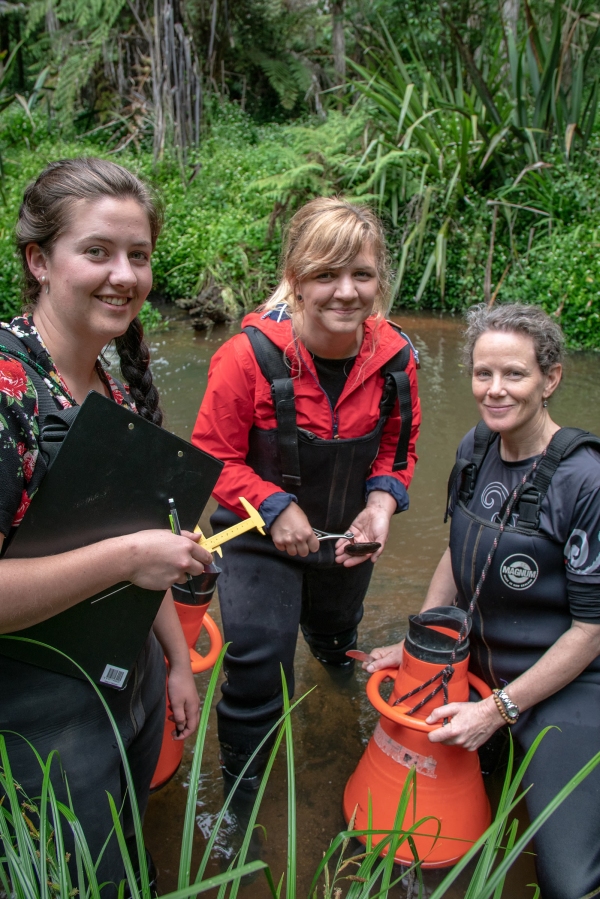Doctoral student, Michele Melchior, has made an important breakthrough in the effort to save New Zealand's freshwater mussels, or kākahi.
Kākahi were once a valuable food source for Māori, and they also play a crucial role as indicators of the health of waterways. All three kakahi species in New Zealand are in decline.
Michele’s PhD study is part of the Cultural Keystone Species research programme, which is funded by the Ministry of Business, Innovation and Employment. Michele's research focusses on the reproductive biology of the two freshwater mussel species that coexist in Waikato streams, the more common Echyridella menziesii and the rare and threatened Echyridella aucklandica.
Michele has discovered that the different mussel species have different reproductive strategies and that the population of one species is declining faster than its counterparts. This clue could essentially help prevent the species decline.
Kakahi need the assistance of fish in order to reproduce, says Melchior.
"While some adult freshwater mussel species broadcast their larvae into the water column like their marine counterparts, others may lure in nearby fish—often by spitting out hundreds of mucus packages (conglutinates) containing larvae into the overlying stream water.
"These little packages are camouflaged to look like fish food, most often like worms and leeches. When the larvae are close to a fish, they may either attach passively or get eaten by the host fish who then carry the juveniles around on their fins or gills until they’re big enough to drop from the fish. The juveniles then survive on their own hidden deep within the sandy bottoms of our streams."
Melchior's research revealed that one of the Kākahi species, Echyridella auckladica, releases larvae in a way that mimics fish food and lures suitable carrier fish close enough for the larvae to attach to the fish gills. This is the first report of freshwater mussels using type of behaviour outside of North America.
The different types of release strategies exhibited by both species means that the fish hosts for both species might differ and that E. aucklandica larvae may only be compatible with one or two species of fish unlike, E. menziesii, a known host generalist, which uses many fish species as hosts.
If E. aucklandica is in fact a host fish specialist (relying on a parasitic relationship with only one or two fish species) it may mean that the two mussel species may coexist by partitioning their use of host fish.
It also means that not just any fish will do for E. aucklandica, says Melchior. "This means that if due to habitat loss, pollution, fish barriers and other factors, certain fish aren’t available to assist during the important larval part of the mussels life-cycle, the mussel species may be in a bit of trouble."
NIWA Ecotoxicology Scientist Sue Clearwater, who is Melchior's supervisor, was thrilled by her discovery. Dr Clearwater says, “This particular species can live a really long time - up to 50 years or more. But if they're not reproducing enough young they're not replacing themselves, so they slowly die out and become a geriatric population."
Melchior's discovery has highlighted the need to develop new methods for captive propagation of E. aucklandica to support restoration of declining populations. Steps are now being undertaken to identify fish hosts on wild fish populations in the field, as well as moving onto laboratory host fish infection trials which will begin during the next reproductive season.
The discovery has raised the importance of host-mussel relationships in New Zealand and in identifying host-fish species for E. aucklandica in order to lay the foundation for the species conservation.


